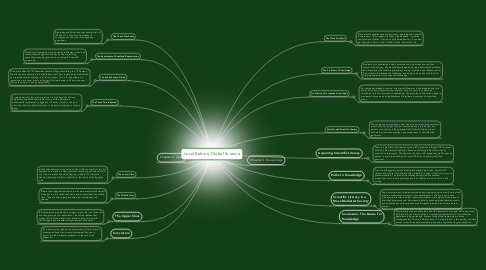Local Babies, Global Science
by Kara Archer

1. The Coptic Mechants
1.1. Georgette and Mihail undergo several trials of IVF and ICSI. They are very wealthy in comparison to the rest of the Egyptian population.
2. The Enactment of Stratified Reproduction
2.1. Mikhail and Georgette are nore similar to Western elites than lesser classed Egyptians. Money isn the major thing preventing many Egyptians from receiving IVF and ICSI treatment.
3. The Public-Private Divide
3.1. There were about 35 IVF treatment centers in Egypt according to a 1996 study. Israel is the only country in the middle easy that offers a government subsidized new reproductive technology to all of its citizens. This is for the attempt to reproduce more Jews. Israel and Egypt differ immensely in IVF services even though they are so close geographically.
4. The Three-Tiered System
4.1. A very pyramidal class structure exists in urban Egyptian society. Three tiers; the elites, the middle class, and the masses are differentially represented in Egyptian IVF clinics. This must be paid out of pocket since health insurance is a newly developing concept in Egypt.
5. The Middle Class
5.1. Middle class Egyptian patients are well represented at IVF centers today but in most cases financial concerns overwhelm the middle class. They are often highly educated but usually have low salaries.
6. The Lower Class
6.1. Independent pursuance by women without their husbands is rare but happens on occasion. Elites deserve to reproduce and the poor do not. This is because the elite offspring, made in IVF clinics are deemed better potential contributors to the future of the Egyptian state.
7. Chapter 2: Class
8. The Upper Class
8.1. IVF treatments are perceived as being only for the rich. Even the rich struggle to pay for treatments. The Qur'an teaches that money and children are the most precious thing in the world which triggers people with money to search for children.
9. Conclusion
9.1. IVF treatment is exclusive and exclusionary. Pity for the less advantaged hasn't led to activist attempts. Economic factors are the biggest contributors to the lack of IVF expansion.
10. Morality and Scientific Literacy
10.1. The separation of procreation from sex is quite a disturbing reality for most of Muslim Egypt. In this country adoption is prohibited, and parents are only true if they gestated a child inside the womb,not outside. Social mores impinge upon acceptance of new infertility treatments.
11. Problems of Procreative Knowledge
11.1. Procreative knowledge has to do with major differences in knowledge about the human body and its procreative processes. Lack of access to capital also contributes to lack of procreative knowledge. The acceptance of women's eggs in procreative discourse has only heightened the blame on women for infertility issues.
12. The Problem of Knowledge
12.1. Problems with knowledge include uncertain understandings about of her reproductive biology, fragmented knowledge about reproductive technologies, and assumption that there is something "wrong" with the body. Believes about God creating the illnesses and allowing cures only to be pursued by the rich cripple people from true scientific knowledge.
13. The Oasis Dwellers
13.1. Many infertile couples have marital issues regarding their inability to reproduce. This is especially likely in the husband. If his wife can't produce children it can be socially embarrassing. It can also lead people to have a lack in fulfillment over their entire life.
14. Chapter 3: Knowledge
15. Acquiring Scientific Literacy
15.1. There is a high level of expertise among IVF physicians in Egypt. ICSI is lesser known by the general population because infertility problems are usually assumed to the woman. The chances of a successful pregnancy are thought by women in some relationships but overall ICSI isn't a primary infertility treatment.
16. Paths to Knowledge
16.1. Some ways Egyptians access medical knowledge are books, doctors/IVF centers, and media. Only the educated middle and upper class have access to printed materials. The idea of the wealthy having medical assisted pregnancies is more accepted because their children are worth more to the society.
17. Scientific Literacy in a Mass-Mediated Society
17.1. The local media has followed test tube baby-making since it's start. Some of the media is educational and some is for entertainment. The large, and active journalism profession and film industry contribute to this mass of media about infertility being produced. Awareness, publicity, covering global developments, and normalization of the process are all impacts the media has made on this subject.
18. Conclusion: The Desire for Knowledge
18.1. Most people who are educated about IVF treatments are upper class, educated individuals. Even infertile elite are improperly educated about some infertility treatments in Egypt though. Success rates of the treatments are often misrepresented. The moral implications of it are profound in this society, and that causes issues for people considering using this new technological innovation.


